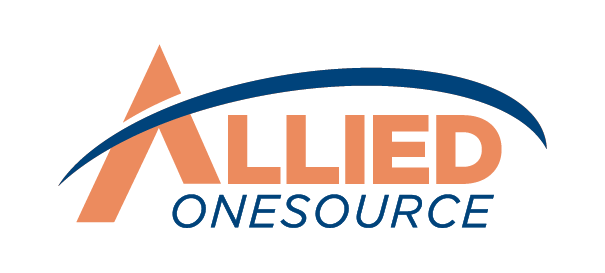The Power of Keywords: How to Make Sure Your Online Application Hits All the Right Notes
Submitting multiple applications without hearing back can be incredibly frustrating. You've invested time crafting your resume and cover letter, yet nothing seems to happen. What could be going wrong? The issue may not be your qualifications or experience but how well your application aligns with automated screening systems that employers use.
Most companies now use applicant tracking systems (ATS) to filter applications before they reach human recruiters. These systems scan resumes for specific terms that match the job description. This makes it essential to use the right keywords to get your application noticed. This guide will show you how to find and use these keywords to help your application reach the right people.
Understanding ATS: Why Keywords Matter
Think of an ATS as a digital gatekeeper that looks for specific words and phrases - keywords - that match what employers want. These keywords could be specific skills ("project management"), technical tools ("Salesforce"), or qualifications ("Bachelor's Degree") mentioned in the job ad. The ATS scans your resume for these exact terms to determine if you're a potential match.
Don't feel bad if you haven't been getting through ATS. About 75 percent of applications never make it past this initial screening.¹ It's not because candidates aren't qualified but because their resumes don't use the right keywords. For example, if a job requires "data analysis" experience but your resume says "analyzed statistics," the ATS might miss this match.
But keywords aren't just important for getting past the ATS - they help recruiters too. When reviewing applications, recruiters quickly scan for these same terms to find candidates with the right experience.
Using "customer service" instead of "helping clients" or "SQL database management" instead of just "working with data" helps your application stand out to both the automated system and the person reviewing it.
This doesn't mean cramming your application with every possible industry term or repeating the same words repeatedly. That's called keyword stuffing, and both ATS and recruiters can spot it. Instead, focus on using the most relevant terms naturally throughout your application. The good news? You don't have to guess which keywords to use - they're in the job ad. Let's look at how to find them.
Related Reading: 5 Tips for Writing a Great Resume
Hit the Right Notes with Industry-Specific Keywords and Terminology
Starting a job search can feel overwhelming, especially when you're facing automated screening systems. But here's the key: using the right resume keywords can make the difference between your application being seen or overlooked. Let's walk through how to find and use these keywords to help you land your dream job.
1. Analyze the Job Description
The job application itself is your best resource for finding the right keywords. Start by carefully reading the "Requirements" and "Responsibilities" sections, as these typically contain the must-have qualifications and skills employers seek. Pay special attention to terms that appear multiple times throughout the posting - repetition often signals importance.
Look beyond just the technical requirements. While specific systems and certifications are important, don't overlook soft skills mentioned in the posting. Terms like "cross-functional collaboration" or "problem-solving" are just as crucial as technical expertise. Additionally, reviewing similar job postings in your field can help you identify common industry terms that might be valuable to include.
Remember to use these terms exactly as they appear in the posting. If the job requires "project management," don't change it to "managing projects." If they specify "Salesforce CRM experience," don't just write "CRM knowledge."
2. Match Your Language to the Employer's
When describing your experience, use the same language found in the job posting. This isn't about changing what you've done - it's about describing your experience in ways that match what the employer is looking for. For example, if you've managed customer service teams but the posting talks about "leading customer success departments," adjust your wording accordingly.
Here's an example of what it would look like:
Original experience: "Helped customers with their questions and managed a small team"
Better version: "Led a customer success team of 5 representatives, resolving 100+ inquiries daily while maintaining 95 percent satisfaction rates"
Pay attention to the action verbs in the job description and use them in your experience section. If the posting uses words like "implemented," "coordinated," or "streamlined," try to use these same verbs when describing your achievements. This shows you understand exactly what the role requires.
3. Place Keywords Strategically
Think about where your keywords will have the most impact. Your resume summary is a great place to start - it's the first thing anyone will see. Rather than writing something basic like "Experienced in customer service," try something more meaningful like "Customer success professional with 5 years of experience in complaint resolution and team leadership."
When you're writing about your work experience, weave those keywords naturally into your real achievements. Instead of just saying "Handled customer calls," show what you actually did: "Managed high-volume customer support queue, maintaining 95 percent satisfaction rate." This way, you're not just using the right words - you're showing what you can do.
Read More: Breaking into the Workforce: How to Avoid 8 Common Resume Mistakes for Your First Job
4. Review and Refine
Here's a simple test: read your application out loud. Does it sound like something you'd actually say in an interview? If you find yourself stumbling over words or if something sounds unnatural, that's your cue to rewrite it.
Before you hit send, take one last look at those key requirements from the job posting. Make sure you've covered the most important skills and qualifications - these are what the ATS is looking for. Remember, it's better to use a few relevant keywords well than to cram in every possible term.
Read More: 10 Personal Traits to Describe in Your Resume
Quick Checklist: Is Your Application ATS-Ready?
Before hitting that submit button, take a moment to review your application. Ask yourself:
- Does your application flow naturally, or does it sound like you're just listing keywords?
- Keep things simple? Those fancy tables and graphics might look nice, but ATS systems can't read them.
- Picked one way to describe each skill? If the job asks for "project management," stick with that instead of switching between different phrases.
- Been specific about your skills? Instead of saying you're "good with computers," name the actual software you know.
- Used clean, simple formatting? Stick to standard headers and fonts that any system can read.
Read More: New Year, New Opportunities: How to Master the Job Hunt and Land Your Dream Role
Ready to Put Your Optimized Application to Work?
At
Allied OneSource, we understand that crafting the perfect application takes time and effort. Our team of recruiters understands what hiring managers are looking for - beyond just the right keywords. We help match your skills and experience with employers who value what you bring to the table, and we can guide you through every step of the application process.
Ready to take the next step in your career? Visit us to browse current openings and submit your application. Our team is here to help you find opportunities that match your skills and career goals, across all industries and experience levels.
Reference
1. Is Your Applicant Tracking System Hurting your Recruitment Efforts. (2022, March 8). Society for Human Resources and Management. https://www.shrm.org/mena/topics-tools/news/hr-magazine/applicant-tracking-system-hurting-recruiting-efforts












